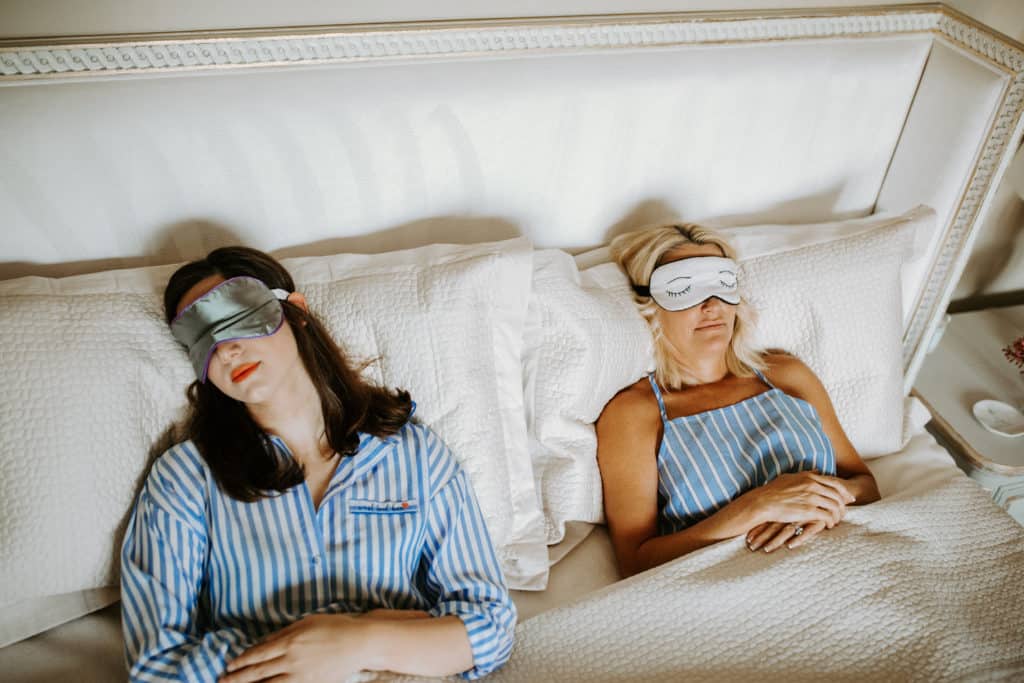Written by: Christina Pierpaoli Parker, MA, Ph.D. student
We’ve talked about why you need to sleep, now let’s talk about how to get sleep. Consider making some of the following simple behavioral and environmental tweaks:
How To Get Sleep
Changing your behaviors
- Going to bed only when you feel sleepy, not tired. That means calling it a night when you feel “heavy”—like you can’t keep your eyes open or head from bobbing; not when you feel psychologically “spent” after a long day. Going to bed when you feel fatigued—rather than sleepy—sets you up for shortened, broken, restless sleep.
- Waking up at the same time every day, even on weekends. Your body rewards you for routine. Contrary to popular belief, waking up at the same time matters much more than going to bed at the same time. Set an anchoring wake up time and keep it. Because we have a 24-hour circadian rhythm, you’ll go to bed around the same time if you do.
- Building up sleep “pressure” during the day. Engage in activities during the day that requires significant energy expenditure, like cardio. More physical exertion earlier means more and deeper sleep later. Pace yourself, though.
- Curbing your caffeine consumption after 12 PM. Caffeine has a fairly long half-life (5 to 6 hours)— so it requires lots of time to excrete. Taper down incrementally or consider replacing with decaf until you get used to going without it.
- Reducing your face time with light-emitting devices at least one hour before bed. Light interrupts the production of melatonin, which triggers drowsiness. During your pre-bedtime “wind-down” period, consider keeping the lights off or low and engaging in a relaxing, device-free activity like reading, sketching, or taking a warm bath. Can’t commit to a tech detox? Consider using these while using your gadgets at night.
Changing your behavior solves only part of the problem, though. Try making some changes to your sleep environment too.
Changing your sleep environment
- Use your bed for sleep, sex, and sickness ONLY. Read, eat, worry, answer emails, text, watch TV OUTSIDE the bedroom. Associating the bedroom with activity can maintain insomnia symptoms. We call this phenomenon “conditioned arousal”—when the bed becomes a cue for wakefulness rather than sleepiness. To re-associate the bed with sleep, shift all other activities to another room and get out of bed if you can’t fall asleep within 15 to 20 minutes.
- Make your bedroom a soothing, safe, and sacred space. Make your bedroom a sanctuary—a place that immediately induces relaxation. Keep it clean, open, and airy. Outfit your bed with soft, comfortable sheets; they don’t need to cost a boatload, they just need to feel good. Play with paint and consider experimenting with a lovely lavender oil diffuser: neutral, blue, and gray hues—and lavender scents—may have soporific effects.
- The darker, the better. Remember what I said earlier about melatonin? Light signals arousal cues to your brain, so try to keep your bedroom as dark as possible. I highly recommend blackout curtains but using a solid eye-mask does the trick, too. I love this one. Consider buying a couple—some for home and some for travel.
- Keep your bedroom cool. Reducing your core body temperature by 2-3 degrees prepares your body for sleep; programming your bedroom thermostat to between 62 and 70 degrees can achieve that.
- Light sleeper? Consider a white noise machine or earplugs. People vary in their sensitivity to stimuli. Tried and true sensory addition (e.g. white noise machine) and deprivation (e.g. earplugs) techniques can work great for “light sleepers” or those who have noisy bed partners.
Nighty night, sleeping beauty!











